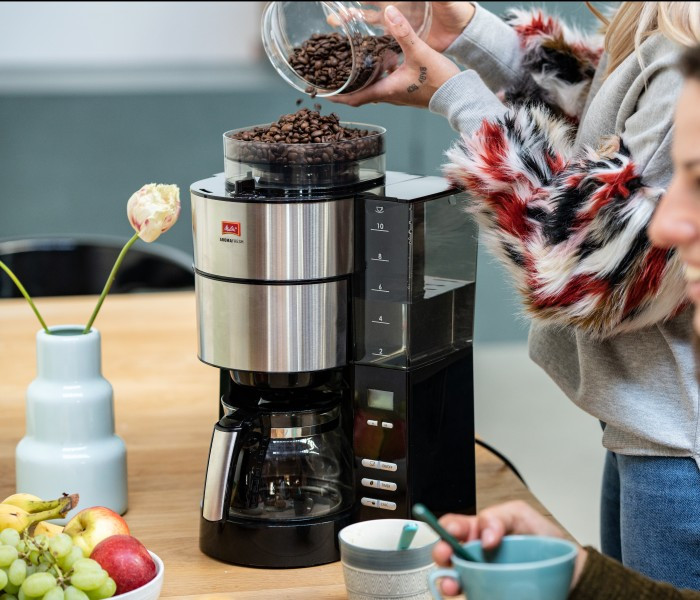Electric coffee makers have been around since the 19th century. However, devices similar to the current ones were introduced only in the 1950s. Already in the early 1960s, Melitta® launched the first filter coffee machine on the market, in collaboration with Widman: “MA 120” – a company that made history. During these years, coffee machines – priced around DM 120.00 – were still a true luxury item. It wasn’t until 1970 that the filter coffee machine achieved its breakthrough. More and more suppliers came on the market and filter coffee makers developed into a mass product. The basic principle of heated water reaching the container drop by drop, through the coffee filter filled with ground coffee, has remained until today and has only been slightly modified over the years.
Most filter coffee makers on the market work on the principle of gravity filtration.
This works like this:
- Water is routed from the water tank through a directional pipe to the heater.
- This is usually installed at the base of the machine (underneath the hob).
- Here, the water is heated to around 100 °C. Via a riser, the heated water now reaches the ground coffee in the filter.
- Even after the brewing process, the heater continues to work. For appliances with a glass jug, it keeps the coffee hot with the built-in hotplate
- For thermal jug devices, it is not necessary. The carafe keeps the coffee warm, the heater turns off automatically after brewing is complete.

Most coffee makers prepare the coffee the same way for each brewing process. The taste is only affected by the quality / dosage of the coffee used. The Melitta® Aroma Selector makes this easier for coffee lovers: It makes it possible to vary the strength of the coffee very easily and according to personal taste. The following Melitta® models have this feature: Look® Selection, Look® DeLuxe, Look® Therm DeLuxe, Enjoy® and Enjoy® Therm.


